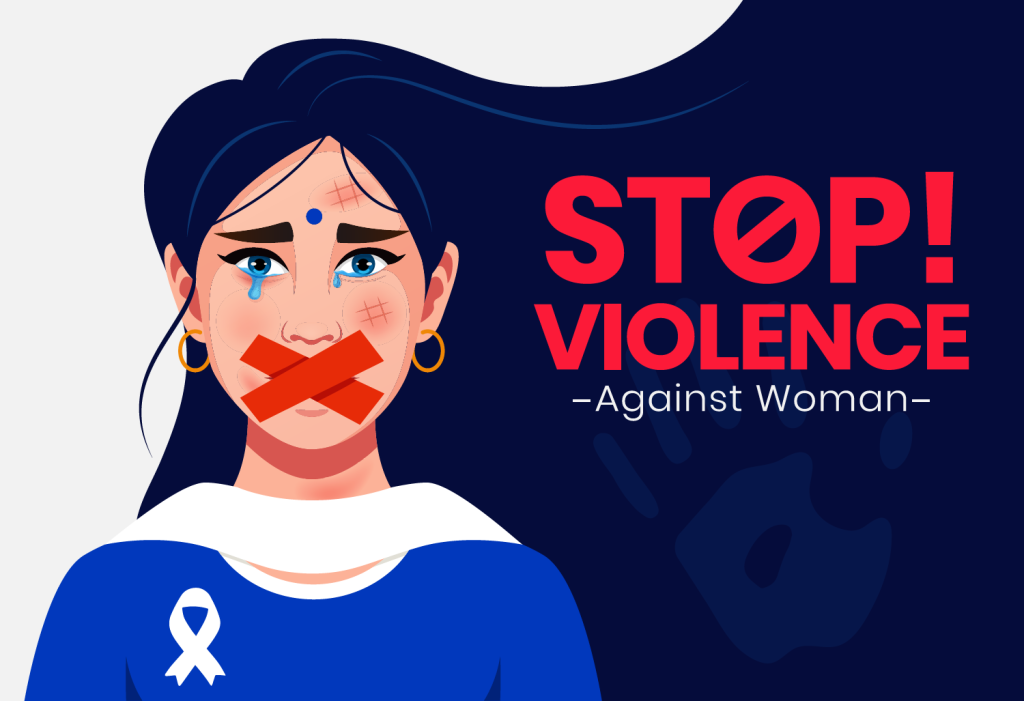Stand Together Network Domestic Violence
Our Blogs
Domestic Violence Awareness
What is domestic abuse? What are the types of domestic violence?
Prevalence: Domestic violence affects women of all ages, backgrounds, and socioeconomic statuses. It is a global issue, with millions of women enduring abuse daily. Domestic violence is a pervasive, life-threatening issue that demands immediate attention. We must work collectively to raise awareness, challenge societal norms, enforce legal protections, and provide resources to support victims. By doing so, we can end the silent epidemic of domestic violence and create a world where women are safe, respected, and free from the threat of violence.

Domestic abuse is more than physical violence. It can also include, but is not limited to:
- Coercive control and ‘gaslighting’
- Physical Abuse
- Emotional and Psychological Abuse
- Verbal Abuse
- Sexual Abuse
- Digital Abuse
- Stalking
- Spiritual or Religious Abuse
- Isolation
- Economic /Financial Abuse
Domestic violence can manifest in various forms, and it is not limited to physical abuse. It encompasses a range of behaviors and actions that involve power and control within an intimate relationship. Here are the main types of domestic violence:
Physical Abuse: This includes any physical force that causes harm or injury to a partner, such as hitting, slapping, punching, kicking, striking, choking, or using objects as weapons or assaulting. It may leave visible bruises or injuries, but it can also result in less visible harm, such as internal injuries or long-term health problems.
Emotional and Psychological Abuse: Emotional abuse is characterized by manipulative behaviors aimed at undermining a partner’s self-esteem, self-worth, and emotional well-being. It may involve constant criticism, humiliation, threats, and isolation. Gaslighting, a form of emotional abuse, involves manipulating someone into doubting their perception or reality.
Verbal Abuse: Verbal abuse includes the use of harsh, hurtful language, name-calling, shouting, and screaming to control and demean the partner. It is designed to create fear, insecurity, and emotional harm.
Sexual Abuse: This form of domestic violence involves non-consensual sexual activities or any sexual coercion within the relationship. It includes rape, sexual assault, or forcing a partner into sexual acts against their will.
Financial Abuse: Financial abuse occurs when one partner controls the other’s access to money and financial resources, making them financially dependent or unable to make financial decisions. This can involve withholding funds, preventing access to bank accounts, or forcing a partner to hand over their earnings.
Digital Abuse: With the rise of technology, digital abuse has become more prevalent. It involves using technology to control or harm a partner, such as monitoring their online activities, sharing explicit images without consent, or stalking them through social media or GPS tracking.
Stalking: Stalking is a pattern of behavior where one partner engages in repeated and unwanted attention, harassment, or threats toward the other partner. This can include cyberstalking, following the person, and sending unwanted messages or gifts.
Spiritual or Religious Abuse: In some cases, an abuser may use a partner’s religious or spiritual beliefs to manipulate and control them. This can include forcing a partner to conform to certain religious practices, using religious beliefs to justify abuse, or attempting to isolate a partner from their religious community.
Isolation: Isolation is not a standalone type of abuse, but it is a common tactic used alongside other forms. Abusers may seek to isolate their victims from friends and family, making them more dependent on the abuser for social interaction and support.
Economic Abuse: Economic abuse is a subset of financial abuse and involves controlling or limiting a partner’s financial resources, preventing them from accessing employment or education, and creating financial dependency.
Recognising these forms of abuse and understanding their interplay is essential to provide support and intervention to victims. Understanding these variants is vital to effectively support and intervene on behalf of those affected. We urge every victim of domestic violence to seek help and support from local charities, hotlines, or law enforcement agencies.
The Domestic Abuse Hub does not replace either the Early Help Family Hub, Children’s or Adult’s Multi-Agency Safeguarding Hubs but will be linking closely to them both with key link professionals in place. Please see attached document for more information.
It’s important to note that domestic violence is a complex issue with multiple contributing factors, and economic stress is just one of them. It’s crucial for individuals and communities to be aware of the signs of domestic violence, to provide support to victims, and to have resources and services available to help those in need. Addressing the root causes of domestic violence often involves a combination of social, economic, and psychological factors.
no direct causal relationship between the two, economic stress and financial difficulties can contribute to an environment in which domestic violence may be more likely to occur or escalate.
Here are some ways in which rising living costs can potentially affect domestic violence:
It’s important to note that domestic violence is a complex issue with multiple contributing factors, and economic stress is just one of them. It’s crucial for individuals and communities to be aware of the signs of domestic violence, to provide support to victims, and to have resources and services available to help those in need. Addressing the root causes of domestic violence often involves a combination of social, economic, and psychological factors.
The impact of rising living costs on domestic violence can be complex and multifaceted. While there is no direct causal relationship between the two, economic stress and financial difficulties can contribute to an environment in which domestic violence may be more likely to occur or escalate.

Legal and Policy Measures
Legal Protections: Strong legal protections are essential to hold perpetrators accountable. Laws against domestic violence must be enforced and perpetrators brought to justice.
Awareness Campaigns: Public awareness campaigns can help challenge the stigma and silence that often surrounds domestic violence.
Causes of Domestic Violence
Power and Control: At the heart of domestic violence is a dynamic of power and control, where the abuser seeks to maintain dominance over the victim.
Societal Norms: Gender inequality and cultural norms that perpetuate male dominance play a significant role in enabling domestic violence.
The Deadliness of Violence in the Home
Fatal Outcomes: Domestic violence has lethal consequences, with women being the most common victims of intimate partner homicide. Many lose their lives due to the violence inflicted upon them.
Risk Factors: Various risk factors contribute to the lethality of domestic violence, including escalating abuse, access to firearms, and a history of violence.
Consequences of Domestic Violence
Physical Consequences: Women who experience domestic violence often endure physical injuries, long-term health problems, and disabilities.
Psychological Trauma: The emotional and psychological scars from domestic violence can lead to anxiety, depression, post-traumatic stress disorder (PTSD), and even suicide.
Economic Impact: Women subjected to domestic violence may suffer financially, as they are often isolated from economic resources or prevented from working.
The Importance of Prevention and Intervention
Prevention Strategies: Comprehensive prevention strategies should address both the individual and societal levels, targeting cultural norms and attitudes that perpetuate domestic violence.
Intervention: Providing support and assistance to victims is crucial. This includes safe housing, counseling, legal assistance, and protection orders.
Steps to take to keep you safe.
It is important to think through what steps you can take to keep safe. How might you respond in different situations? How will you get help if you need it?
- Try to keep your mobile phone on you at all times. Try to make sure your mobile phone is charged.
- Family, friends and neighbours can support you.
- Can you safely keep in touch with people you trust over the phone or online? This could be a friend, family member, neighbour, carer, or support worker. You can use the opportunities when you can leave the house to make these calls e.g. when you go to the supermarket.
- Can you talk to them about what you are experiencing?
- Can you have a code word with a trusted person that lets them know it is not safe to talk or to ask them to phone the police?
- Could you agree a regular time and day for them to check-in?
- Let them know if there are safe times to call you
- Get familiar with how to delete messages quickly. If the abuser is monitoring your phone – delete your messages or call records afterwards. You can also try apps that allow for more secrecy. For example, Telegram and Signal
The impact of rising living costs on domestic violence can be complex and multifaceted.
Further Reading
Further Reading
https://en.qantara.de/content/impact-of-coronavirus-rise-in-domestic-violence-in-the-middle-east
https://www.npr.org/sections/coronavirus-live-updates/2020/04/06/827908402/global-lockdowns-resulting-in-horrifying-surge-in-domestic-violence-u-n-warns?t=15862593248
Multi Agency Safeguarding Hubs
The Domestic Abuse Helpline does not replace either the Children’s or Adult’s Multi-Agency Safeguarding Hubs but will be linking closely to them both with key link professionals in place. Reporting into child protection and safeguarding adults’ processes will continue as normal with this process adding an additional support and opportunity for services to work together.
Referrals to the Children’s MASH and Family Support services should go through the online portal.
www.enfield.gov.uk/childrensportal
If you have a child safeguarding concern that can’t wait for a referral form, you should call the Children’s MASH on 020 8379 5555. If you are concerned about an adult experiencing domestic abuse, then you can refer them to the Domestic Abuse Hub or sign-post them. Adults with disabilities of any kind (including age related frailty) are sadly twice as likely (as the general population) to be subject to domestic abuse in any given year. If you think that an adult you’ve identified (or anyone within their household/ related to the situation) has other care and support needs, then you can refer via the attached numbers. To report abuse of an adult with care and support needs, Monday to Friday during working hours, you can ring Enfield Council and speak to the Adult Multi-Agency Safeguarding Hub:
Tel: 020 8379 3196
Or e-mail TheMASHteam@enfield.gov.uk
We also have a dedicated phone line (to take reports) which is available day or night:
Tel: 020 8379 5212
To report abuse in Enfield from a textphone
Tel: 18001 020 8379 5212
Please note that these are not emergency services – always dial 999 if an ambulance or Police are required. If you believe an adult needs support from carers or occupational therapy on a non-urgent basis then please call the Enfield Single Point of Access on: 0208 379 1001
Or e-mail adultsocialcare@enfield.gov.uk
New Enfield Domestic Abuse Hub and Free-phone Helpline 0800 923 9009. Go Live 1st May 2020. Both the Hub and the Helpline are operational 9am – 5pm Monday to Friday
